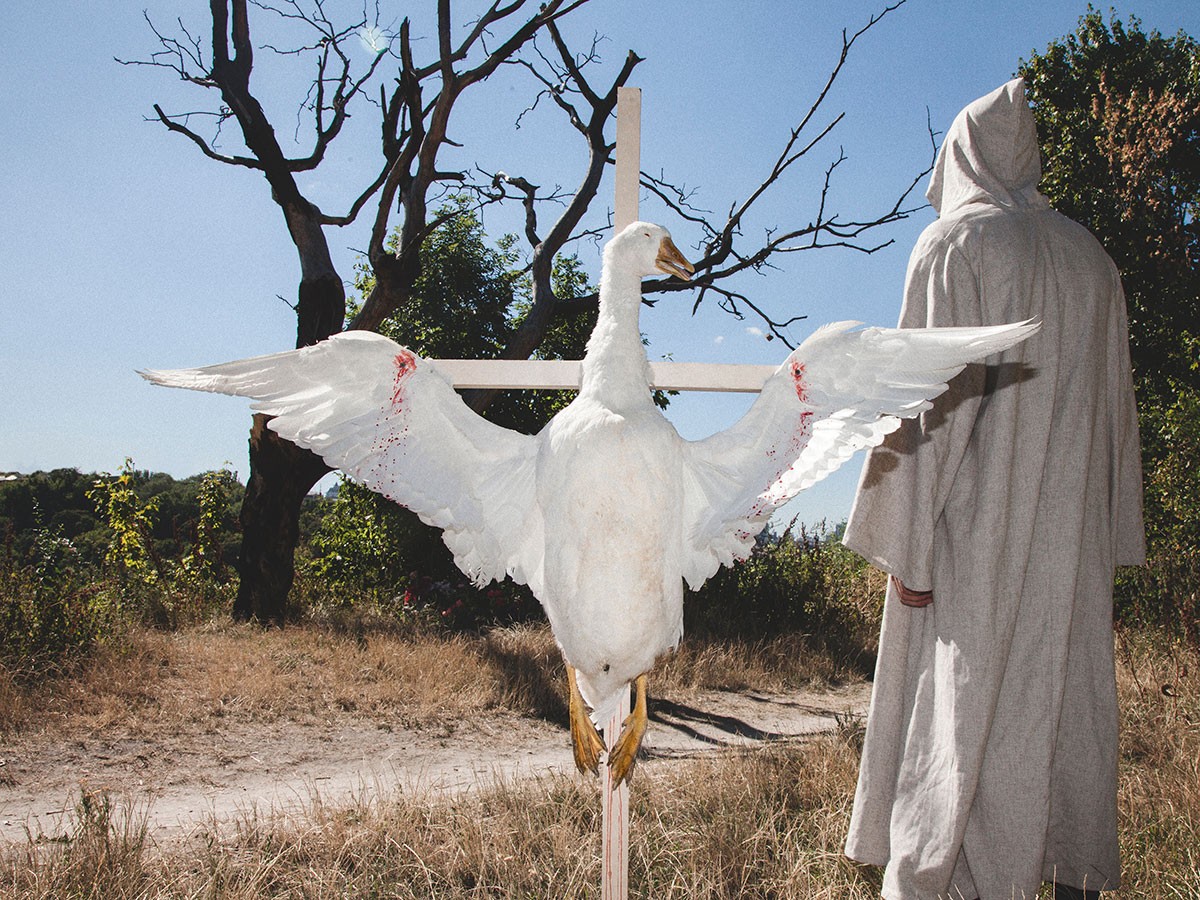
Execution of the Food
The history of execution is the history of humanity. The first religious books, the first written laws, the first literary works all have descriptions of crime that is punished by death. Domesticated fire, bow and arrow, wheel, domesticating animals, metal working, gun powder, electricity are all examples of how every meaningful invention has for centuries been used for legitimized killing. The mass abandonment of capital punishment in many countries may one day be acknowledged as the biggest achievement of the 20th century, but it is too early to say that it has already happened. Mercy to criminals is the first thing that people are willing to forget in difficult circumstances.
Decapitation
In the modern world this kind of execution is most often used in Saudi Arabia: about 100 times in 2015 already. People are sentenced to decapitation for murder or drug dealing, but actions that are not even considered crimes in other countries are also punished with capital punishment, such as witchcraft, apostasy, homosexuality. At the same time, murderers can avoid death at the last moment – up until the executioner strikes, the relatives of the victim have the right to announce a pardon.
{“img”: “/wp-content/uploads/2015/08/execution_01.jpg”, “alt”: “”, “text”: “Lithuanian pork.”}
Stoning
In Mauritania, Pakistan, Qatar, Saudi Arabia, Somalia, Sudan, UAE, Yemen and in 12 states of Nigeria it is legitimate punishment for adultery. Based on sharia and tribal law, it is also practiced in Afghanistan, Iraq and in parts of Syria controlled by ISIS. It is very rare that stoning does not result in death. If the victim is alive after the execution is finished, Islam prohibits finishing them off.
{“img”: “/wp-content/uploads/2015/08/execution_02.jpg”, “alt”: “”, “text”: “Spanish peaches.”}
Burning alive
As everywhere in Europe, in Rus, people were burnt for witchcraft and apostasy. In 1569, three carpenters – Neupokoy, Danilo and Mikhail – were executed among others. They were sent together with 150 other settlers to build a fortress at the border with Lithuania. There was a problem with supply, the builders faced famine, and they had to slaughter and eat a calf whose meat was considered impure by the Russians at the time. Ivan the Terrible ordered the burning of the three men alive.
{“img”: “/wp-content/uploads/2015/08/execution_03.jpg”, “alt”: “”, “text”: “Ukrainian salo (pig fat).”}
Shooting with arrows
Is mentioned among many other methods of execution in the biographies of early Christian martyrs. In particular, St. Sebastian was executed with arrows (he survived and was stoned to death), as well as the Anglo-Saxon King St. Edmund (died). According to The Song of Igor’s Campaign (an epic poem in Old East Slavic Language), the Cumans describe executing the hostage Vladimir, son of the Prince, after the Prince managed to escape captivity:
Since the falcon to his nest is flying,
let us shoot dead the falcon’s son
with our gilded arrows.
{“img”: “/wp-content/uploads/2015/08/execution_04.jpg”, “alt”: “”, “text”: “Latvian canned food.”}
Hung by the ribs
The sharpened metal hook was placed between the ribs of the criminals sentenced to this method of execution and they were suspended in the air. It is considered that the strain in the chest muscles made breathing difficult which lead to death by suffocation. However, the example of Prince Dmytro Vyshnevetsky shows that, at least in some cases, difficulty breathing did not lead to death. Baida was suspended on a hook on a wall in Istanbul, and cursed Islam and Prophet Mohammed so much for several more days that the Turks had to eventually shoot him.
{“img”: “/wp-content/uploads/2015/08/execution_05.jpg”, “alt”: “”, “text”: “Australian beef.”}
Hanging
One of the most popular execution methods in modern times. Hundreds thousands of people have been hanged, as well as one elephant cow. In 1916 in Tennessee, a 30-year-old elephant named Mary stomped an inexperienced and very cruel circus worker to death. To satisfy public demand, the next day the owners of the elephant publicly hanged her on a lifting crane.
{“img”: “/wp-content/uploads/2015/08/execution_06.jpg”, “alt”: “”, “text”: “Polish pear.”}
Crucifixion
This execution that has been glorified by Christianity is nowadays officially stated only in the Regulatory Code on Sentences of the Republic of Iran: “The convict will be tied with his or her back against a crucifix facing the Qebleh, with feet slightly above the ground in a vertical position”. If the victim does not die in three days, they are pardoned. However, there are no known examples of crucifixion in the modern history of Iran.
{“img”: “/wp-content/uploads/2015/08/execution_07.jpg”, “alt”: “”, “text”: “Hungarian goose.”}
Impalement
The first mention of this type of execution was in the 18th century BCE – the Code of the Babylonian King Hammurabi sentenced to impalement wives who had killed their husbands at the instigation of their lovers. This method of execution was used in Europe on rare and serious occasions, such as punishment for mass murder, treason against the motherland, cheating on one’s Tsar-husband (in 1718, Stepan Glebov was sentenced to impalement for his relationship with the first wife of Peter the Great). Impalement was practiced much more actively by the rulers of the Ottoman Empire. Even at the beginning of the 19th century, dozens of Greek partisans were executed by impalement, and according to some witnesses, impalement was used by the Turks in the 20th century to kill Armenians as well.
{“img”: “/wp-content/uploads/2015/08/execution_008.jpg”, “alt”: “”, “text”: “Dutch cheese.”}
Drowning
Drowning is simple to perform, so it was often used when there was a need to kill a large number of people at once. La Michelade is one of the most famous cases, when over the night and into the following day on September 30, 1567, St. Michael’s Day, Huguenot Protestants threw 80-90 of the most influential members of the Catholic community of French Nimes into a well in the yard of the bishopric.
{“img”: “/wp-content/uploads/2015/08/execution_09.jpg”, “alt”: “”, “text”: “Norwegian trout.”}
Photo: Valentin Bo
Producer: Yaroslav Korotkov
Props: Igor Trotz
Text: Ivan Siyak






